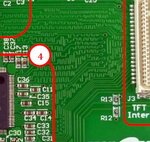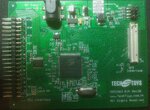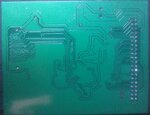yikes
Newbie level 4
Hi all,
I am a student trying to learn as much as posible about electronics. This is my first post in edaboard.
Some time ago, a friend gave me a TFT controller board from Techtoys. It is a SSD1963 controller board.
Since i received it i was wondering why the designer of the board made some traces (a lot of traces) that looks like loops or similar.

above there is a screen capture from the manual that shows the traces. They are the RGB and other signals that goes from the controller chip to the TFT connector.
What is the reason that these traces was made like loops? I was looking for information (in google) about this without success.
Thanks.
I am a student trying to learn as much as posible about electronics. This is my first post in edaboard.
Some time ago, a friend gave me a TFT controller board from Techtoys. It is a SSD1963 controller board.
Since i received it i was wondering why the designer of the board made some traces (a lot of traces) that looks like loops or similar.

above there is a screen capture from the manual that shows the traces. They are the RGB and other signals that goes from the controller chip to the TFT connector.
What is the reason that these traces was made like loops? I was looking for information (in google) about this without success.
Thanks.

